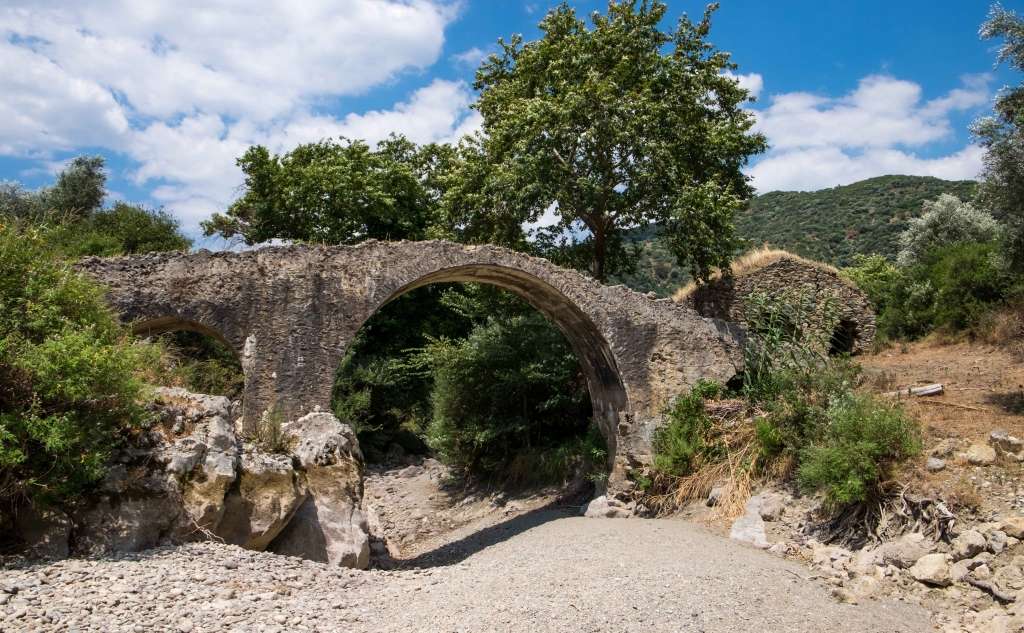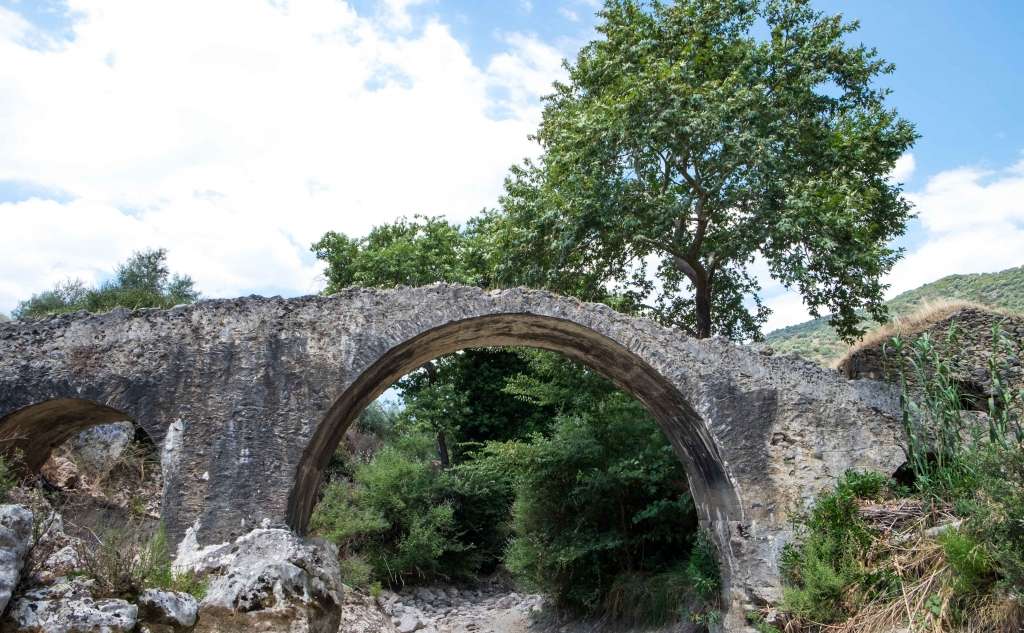Byzantine Bridge of Stara
The bridge of Stara is built close to Melissa and joins the two banks of the Sminos river. The Sminos river (or Bardounopotamos, or Long River) was the border of the Outdoor (Exo) Mani with the villages of Bardounia, inhabited by Islamized Albanians. In other words, it was the natural boundary between free Mani and the Turkish-occupied region.
It is a stone-built with three arches, preserved monument of great architectural value. The bridge connecting the villages of Pera Riza and Dothe Riza has a cobbled surface and a series of stone arches. In contrast, its barriers have become quite worn and have significantly been reduced. It is believed to have been manufactured 400-500 years ago. This bridge was crossed by Ibrahim's troops in 1825, during the battle of Poliaravos. After two years of looting, Ibrahim was defeated and withdrew.
There are preserved buildings at the two ends of the bridge that functioned as watchtowers. Specifically, there is a one-roomed, stone-built building on the right side that dates back to the Ottoman period. It is a Turkish guardhouse with special holsters and slots for scimitars, which also served as a customs office. The historic Grafos watermill is on the left of the bridge, which served as a Greek outpost to prevent Turks from crossing the Mani Free Zone. Indeed, it is said (by the locals) that it had been given to General Makrygiannis as a guarantee of the payment of “loufedoi” (the money that should be paid to the Armatoli - soldiers).
Stara Bridge does not have enough signs, so it is a good idea to ask locals for information on how to get there. Finally, the bridge needs fixing and maintenance work because it is described as the "Parthenon" of the area, representing the cultural heritage of Exo Mani.





